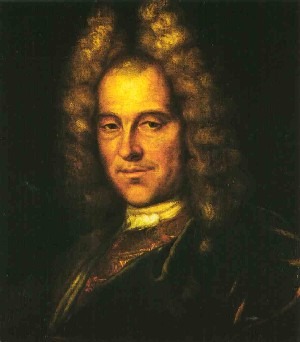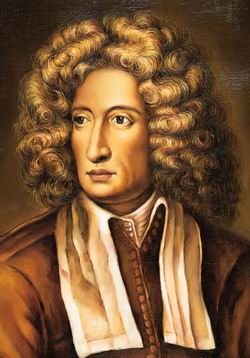
Johann Joseph Fux
John Ravenscroft: Trio Sonata Op. 1, No. 8
The ensemble sonata quickly made it into the German-speaking realm as well. Various composers, including Johann Joseph Fux, wrote sonatas for trio or larger combinations. Fux used his trio sonatas as educational tools, teaching the rudiments of music and the appreciation of music to unsuspecting listeners. In the preface of a vast set of compositions published in 1701 he wrote, “Here dear Reader, you have my Concentus musico-instrumentalis, which was in demand, as I learned, in several places, but was published not for the purpose of sending you a sample of a great work of art — which must be sought in a different type of composition — but to enable me to gratify listeners who do not understand music, and this means the majority.”
Johann Joseph Fux: Partita a3, E 64
Educational considerations also appear to have governed Corelli’s release of his Op. 5 solo sonatas. Corelli was a highly sought-after teacher, and his instruction was the foundation of most violin schools published in the 18th century. Above all, Corelli prized the song-like qualities of the violin while avoiding empty displays of virtuosity. Corelli’s legacy was carried on by three of his most talented students, Francesco Maria Veracini, Francesco Geminiani, and Pietro Locatelli.
Arcangelo Corelli: Violin Sonata, Op. 5, No. 12 “La folia”

Arcangelo Corelli
Arcangelo Corelli: Concerto Grosso in G minor, Op. 6, No. 8 “Christmas Concerto”
Georg Muffat first encountered this new genre in Rome and quickly carried the model to Germany. Concordantly, in the works of Giuseppe Torelli we find the direct link to the greatest master of the Italian concerto, Antonio Vivaldi. The pastoral quality of the concluding movement of Corelli’s Op. 6, No. 8 inspired the composer to append the subtitle “Concerto, fatto per la notte di natale” (Concerto composed for Christmas Eve.) What a wonderful way to musically say Merry Christmas!


